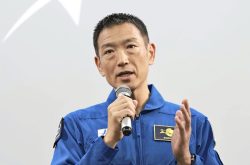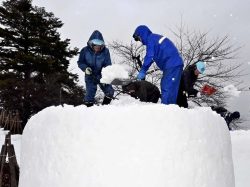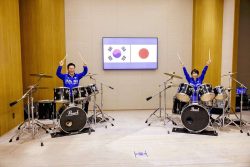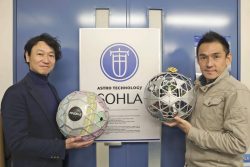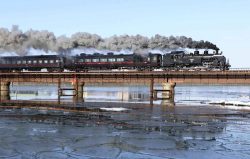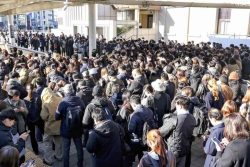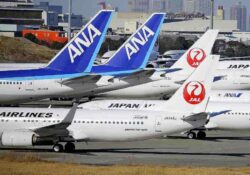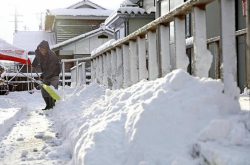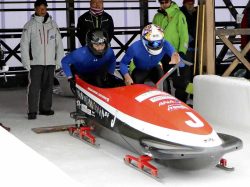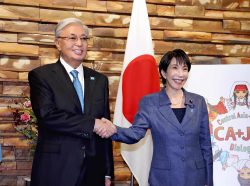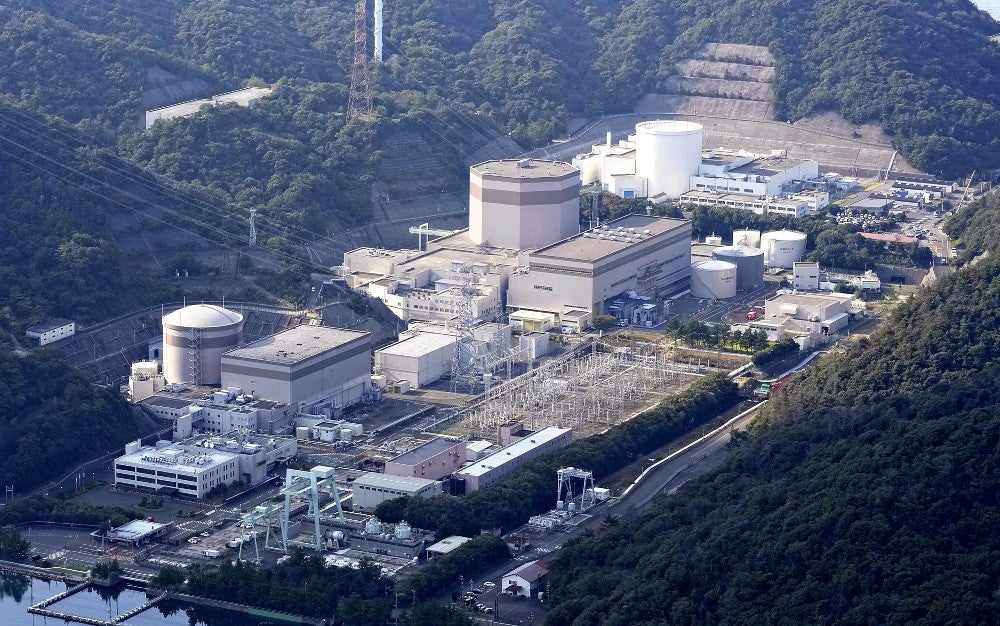
The No. 2 reactor, center, is seen at Japan Atomic Power Co.’s nuclear power plant in Turuga, Fukui Prefecture, in October 2023.
10:20 JST, July 27, 2024
TOKYO (Jiji Press) — Regulators concluded Friday that the No. 2 reactor of Japan Atomic Power Co.’s nuclear power plant in Tsuruga, Fukui Prefecture, central Japan, does not meet new safety standards.
The continuity of the fault directly under the reactor from a nearby active fault “cannot be denied,” the Nuclear Regulation Authority said.
It will be the first time for a nuclear reactor to fail to pass screening under the standards, introduced in response to the 2011 nuclear accident at Tokyo Electric Power Company Holdings Inc.’s Fukushima No. 1 plant, since the NRA was launched in 2012.
After the judgment becomes formal, it will be impossible for Japan Atomic Power to restart the 1.16-million-kilowatt reactor. The company faces the need to make a tough choice, such as decommissioning.
The safety standards do not allow the installation of important nuclear plant facilities, such as reactor buildings, on any active faults.
Regulators discussed whether a fault near the No. 2 reactor building, called K, may move in the future and whether the fault directly under the building is connected to the K fault.
In May this year, the nuclear safety watchdog judged that it is difficult to deny the possibility that the K fault may move in the future. The NRA decided to conduct an on-site inspection in June to reach a conclusion on the continuity issue as early as this month.
Japan Atomic Power denied both activity and continuity of the K fault after analyzing geological samples of the fault and examining the age of sedimentation and characteristics of the fault.
While the NRA said there are uncertainties over Japan Atomic Power’s survey methods and safety assessments, the company said it will consider conducting additional research to obtain further data as it aims to submit a safety screening application to the NRA again.
Japan Atomic Power executive Hirofumi Kenda said after Friday’s NRA meeting that the company has not changed its stance of working toward reactivating the reactor, denying a possibility of decommissioning.
The NRA is expected to discuss a response at its next regular meeting Wednesday, when Friday’s screening conclusion will be reported.
The NRA’s expert team judged the fault under the reactor building to be active twice, in 2013 and 2015. But Japan Atomic Power applied for NRA screening for a restart in 2015.
The screening was suspended twice, however, due to the revelation of many problems with documents submitted by the company, including unauthorized revisions of geological data.
"Science & Nature" POPULAR ARTICLE
-
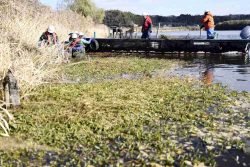
‘Fiercest, Most Damaging Invasive Weed’ Spreading in Rivers, Lakes in Japan, Alligator Weed Found in Numerous Locations
-

Univ. in Japan, Tokyo-Based Startup to Develop Satellite for Disaster Prevention Measures, Bears
-

Tsunami Can Travel Vast Distances Before Striking, Warn Japanese Researchers
-
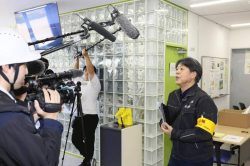
Japan’s H3 Rocket Failed in Latest Launch, Says Official
-
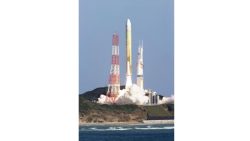
Japan’s H3 Rocket Likely Made 1.5 Trips Around Earth; Analyst Believes Satellite Almost Certainly Lost As Well
JN ACCESS RANKING
-

Japan Govt Adopts Measures to Curb Mega Solar Power Plant Projects Amid Environmental Concerns
-

Core Inflation in Tokyo Slows in December but Stays above BOJ Target
-

Major Japan Firms’ Average Winter Bonus Tops ¥1 Mil.
-

Tokyo Zoo Wolf Believed to Have Used Vegetation Growing on Wall to Climb, Escape; Animal Living Happily after Recapture
-

JAL, ANA Cancel Flights During 3-day Holiday Weekend due to Blizzard


